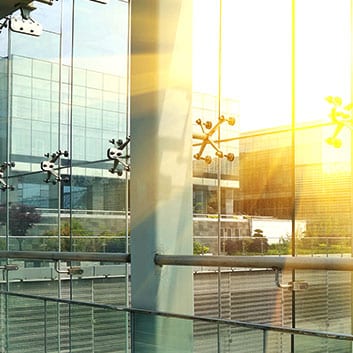Daylight-responsive controls, often known as daylight harvesting, is an energy code requirement that applies to all commercial buildings and has been recently updated in the 2016 New York City Energy Conservation Code and ASHRAE 90.1 – 2013. Daylight harvesting is a lighting control technique used to reduce energy consumption by dimming or switching off artificial lighting when there is sufficient natural light present in the space. This is achieved by using daylight photocell sensors, which are strategically placed within the daylight zone, that calibrate the lighting fixture output with the availability of natural light. The daylight photocell sensors shall continuously dim the lighting fixtures or provide a step-type or control point reduction of the design lighting power (ASHRAE).
The daylight zone is split into two categories: “sidelighting” and “toplighting” (rooftop monitor and roof fenestration). The floor to the top of fenestration, ceiling and/or nearest full-height wall are often used to calculate the daylight zone for the space. For “sidelighting” daylight zones, the floor to the top of the fenestration height is used. For “toplighting”, a percentage of the ceiling height is used. Above is an example of “sidelighting” daylight zone (by 2016 NYCECC).
For ASHRAE 90.1 – 2013, “Sidelighting” is split into primary and secondary areas. The secondary area is calculated by adding one half of the vertical fenestration head height to the primary area.
Some projects or spaces may be exempt from this requirement. Below are the most common exemptions:
2016 NYCECC:
- Lighting that requires special application (i.e. – art galleries, medical procedure spaces, etc).
- “Sidelighting” areas where the total glazing area is less than 24 ft2.
- First floor, above grade, spaces in Group A-2 and Group M occupancies.
ASHRAE 90.1-2013:
- Lighting that requires special application (i.e. – art galleries, medical procedure spaces, etc).
- If the primary daylight zone is under 150W or the combined primary and secondary area is under 300W.
- “Sidelighting” areas where the total glazing area is less than 20 ft2.
- Retail spaces.
For the full daylight-responsive controls requirements please refer to:
2016 NYCECC [C405.2.3] – click here
ASHRAE 90.1 – 2013 [9.4.1.1(e&f)] – click here


